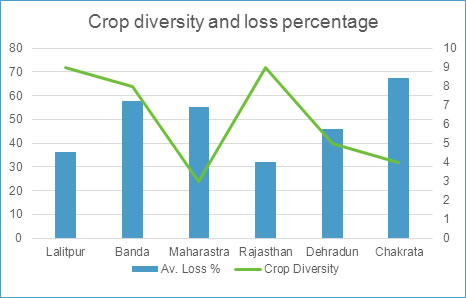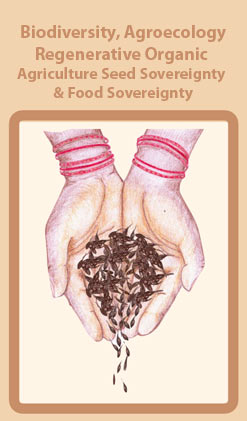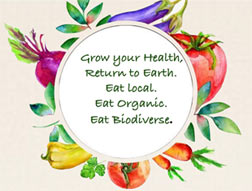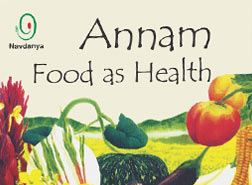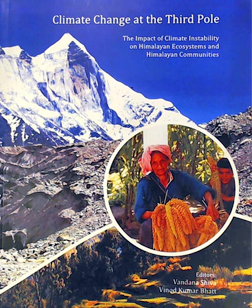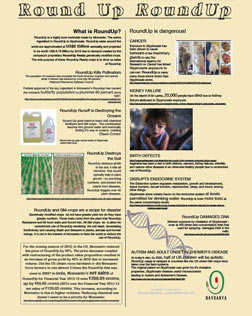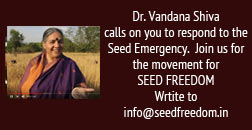Industrial Agriculture A failing Strategy for Soil Management and Food Security
The strategy of increasing food security through chemical fertilizers also referred as green revolution is clearly failing.
Soil and water pollution due to the industrial agriculture especially as a result of extensive use of agrochemicals is one of the serious issues these days. Plant nutrients have also become serious pollutants and are polluting soils as well as ground and surface water. Unwanted aquatic plants are nourished by plant nutrients derived from agricultural runoff, feedlots and barnyards, municipal and rural sewage, and industrial wastes. Aquatic plants clog irrigation and drainage structures and increase nitrates and nitrites in groundwater, which can poison humans and livestock. Other than polluting the oils and water through evapotranspiration, salts in irrigation water become more concentrated in the drainage affluent; the soil accumulates the residual salt which is added to what the arid soils already have in excess. It is further aggravated by the attempted removal of excessive salts through leaching causing further soil erosion.
The situation is quite alarming, and if the Government has to ward off an imminent food crisis, they have to promote eco-friendly fertilization in the mainstream agriculture to restore the lost vitality and vigour of soil.
Ever since the advent of Green revolution in 1960s, Government has adopted a policy to support chemical fertilizers through a subsidy system. The amount of subsidy on synthetic N-P-K fertilisers (domestic and imported) in India during the last three decades has grown exponentially from a mere Rs. 60 crore during 1976-77 to an astronomical Rs. 40,338 crore during 2007-08. In 2009 it shot up to Rs 96,606 crores. However subsidy on fertilizer for the year 2015-16 is planned to be Rs. 72968.56 crore.
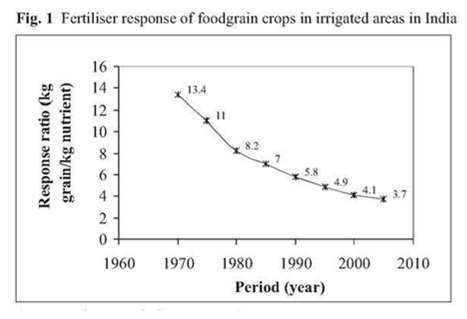
Source: Biswas and Sharma 2008
From the 90s, there has been a debate in the policy, academic and civil society circles on the ill effects of Chemical Fertilizers on soil health and food security. Government of India acknowledges the problem only in 2009, when then Union Finance minister Sri Pranab Mukherji in Parliament during his budget speech said, “In the context of the nation’s food security, the declining response of agricultural productivity to increased fertilizer usage in the country is a matter of concern. To ensure balanced application of fertilizers, the Government intends to move towards a nutrient based subsidy regime instead of the current product pricing regime…”
- Chemical fertilizers are destroying the soil food web and the living organisms that create soil fertility, soil aggregates and healp conserve water in the soil. Industrial agriculture therefore contribution to desertification and increasing drought, affecting food security, livelihood security as well as making agriculture more vulnerable to climate change.
According to FAO- Healthy Soils are the foundation for food, fuel, fibre and even medicine. So we definitely need healthy soils for growing healthy food as well as healthy environment.
According to the Soil Association in order to tackle the issues and challenges and to achieve the UN Millennium Development Goals of environmental sustainability and eradication of extreme poverty and hunger, food and farming systems which put local needs first and which follow organic and sustainable agriculture principles are key.
Organic Agriculture and Living Soils: Solutions to Hunger Poverty and Climate Change
Soil is a living system, a living entity. The life in the soil (soil organisms, both macro and micro) not only helps farming but humanity as a whole. So to keep the soil living it is important to:
- Incorporate organic matter food for living organisms;
- Protect it from erosion and
- Stop using chemicals and adopt organic and agro-ecological practices for soil health management
Soil provides the basis of all plant, animal and human life on Earth. A healthy soil supports plant growth, has the ability to purify air and water and safeguards animal and human health. One cannot imagine about food without soils. There can’t be healthy food without healthy soils. Soils are vital for any ecosystem that plays a key role in the carbon cycles, storing and filtering water, improving resilience to different climatic conditions like floods and droughts etc.
After oceans, soil is the second largest carbon sink on the planet. Soil can nourish carbon-based plants and maximize carbon fixation while minimizing the release of CO2, reversing the effects of climate change. All of these benefits are dependent on the small fraction of soil inhabited by living organisms that comprise the soil food web. A fossil fuel driven economy, including industrial agriculture, has increased the concentration of carbon dioxide in the atmosphere to levels which are triggering climate instability and climate chaos.
Navdanya’s research in 4 different agro-ecosystems of India proves that organic farming not only helps sequester upto 25% more carbon but also help rejuvenate soil by enhancing the soil microbial activity upto 63% (Shiva and Tarafdar 2009).
A recent study of Navdanya in 4 states of India on estimation of crop loss due to untimely rainfall at the time of crop ripening and harvesting period reveals that even in the adverse climatic conditions higher crop diversity was able to minimize the crop losses when compared with monoculture based industrial farms.
